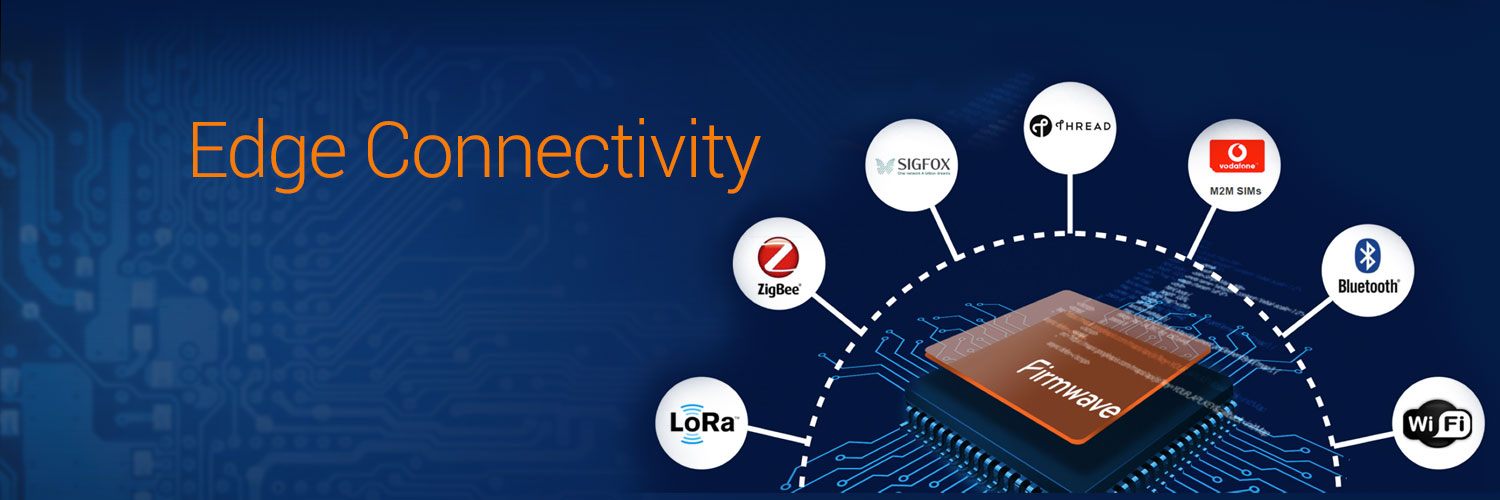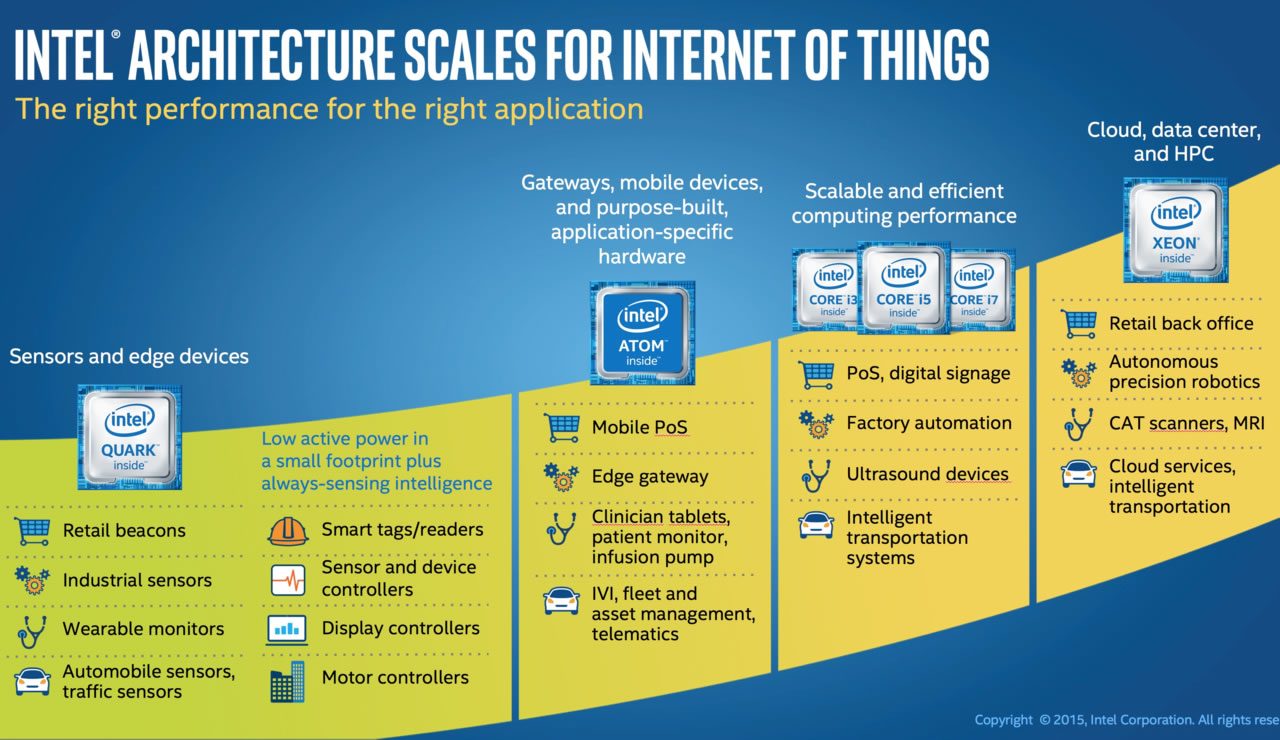The Beauty of Ultra-Low Power and Ultra Small at the Edge
The rapid growth of the Internet of Things (IoT) is creating challenges in procuring, connecting, and securing the wide range of sensors necessary for enabling commercial and industrial grade IoT solutions in healthcare, smart home, and smart building, and other applications. Consider that Machina Research forecasts a dramatic increase from 5 billion device connections in 2014 to 27 billion connections in 2024. The firm estimates that 69 percent of the connections in 2024 will be short range wireless – in-building Wi-Fi*, Bluetooth* Low Energy (BLE), ZigBee*, Thread, and others.
All these connections and radio technologies pose a huge challenge for developers in terms of connectivity, hardware, and firmware expertise, as well as the complexity of network commissioning, security, maintenance, and device management. Plus, there is the ever-constant pressure to make sensors and IoT gateways smaller and consume less power for a longer battery life.
One company meeting this challenge head-on with an innovative edge sensor platform using Intel® Quark™ microcontroller (MCU) technology is Dublin-based Firmwave (Figure 1). The Firmwave* Edge* sensor platform is a suite of customizable, pre-validated hardware and firmware modules for accelerating the design, development, and deployment of the next wave of tiny, intelligent wireless sensors.

Figure 1. The Firmwave Edge is an innovative edge sensor platform based on the Intel® Quark™ microcontroller D2000.
The Modular Firmwave Edge Suite
The Firmwave Edge sensor platform suite consists of low-power, small form factor hardware and firmware modules that support wireless technologies such as Zigbee, Thread, RFID, NFC, Wi-Fi, Bluetooth, LoRa*, SIGFOX* and cellular (Figure 2). These modules enable easy, reliable and secure data collection at the extreme edge of the network on tiny low power nodes. They make it easy to commission, install, manage, and maintain large scale sensor networks on IoT gateways.

Figure 2. The Firmwave Edge suite consists of low-power, small form factor hardware and firmware modules that support a wide range of IoT wireless technologies.
Firmwave Edge hardware reference designs feature an innovative modular, stackable sensor system that can be compared to Lego* blocks for sensors. These modules radically reduce the need for hardware and firmware customization. The suite includes:
- Connectivity modules providing native support for open standards communications protocols
- Security modules reducing the surface attack area with Secure Boot technology and Trusted Platform Modules (TPMs)
- Sensor modules based on an internal, fully extensible sensor hub supporting a vast array of sensor categories and connection types (Figure 3)
- Signal processing blocks enabling updatable and secure devices at the edge capable of additional processing and functionality
- Outdoor and indoor location blocks providing localization solutions for smart buildings and smart offices, asset tracking, and logistics

Figure 3. Firmwave bases its sensor modules on an internal, fully extensible sensor hub supporting a vast array of sensor categories and connection types.
For real-time applications, Firmwave Edge sensors can support tiny operating systems including Zephyr* – a small open source, scalable real-time operating system. Firmwave Edge signal processing libraries reliably acquire, aggregate, filter, and deliver real-time meaningful events avoiding frequently switching on radio links thus saving battery power.
Speaking of power, the Firmwave Edge sensor platform runs on tiny coin-cell or rechargeable battery-powered nodes that last for years. That makes this modular solution ideal for e-paper or scheduling displays in retail outlets and bus and train stations, sensors in hard-to-access locations, and many other scenarios requiring long-lived solutions.
Firmwave provides a platform of software tools and firmware that simplifies the integration of multiple wireless sensor network technologies in a single deployment through a single dashboard. Remote management capabilities significantly reduce device maintenance costs.
For those wanting more assistance, Firmwave offers design services. The company’s highly skilled team of embedded systems engineers and software architects can help developers take an idea from prototype to a commercial-grade IoT product through hardware and RF design and layout, feasibility and prototypes to testing and product delivery. A recent collaboration with HealthBeacon resulted in a smart, connected medical adherence device for the home.
Flexible, Low-Power MCU Provides x86 Architecture Compatibility
The Intel® Quark™ microcontroller D2000 is a low-power, battery-operated, 32-bit MCU offering a more robust instruction set than other entry-level MCUs. Within its small footprint, the Intel Quark microcontroller D2000 includes an ultra-low-power core running at 32 MHz, with 32k integrated flash and 8 KB OTP memory, and 8 KB SRAM.
The Intel Quark microcontroller D2000 brings intelligence to the edge for real-world applications. It is interoperable with other Intel-based systems – simplifying integration of edge products into end-to-end IoT architectures (Figure 4). More can be handled at the device level, reducing the need for costlier and potentially unnecessary gateways, depending on the application.

Figure 4. The Intel® Quark™ microcontroller D2000 is interoperable with other Intel-based systems – simplifying integration of edge products into end-to-end IoT architectures
The Intel Quark microcontroller D2000 offers a plentitude of input/output (I/O) options compared to other entry-level MCUs, enabling companies like Firmwave to offer truly flexible, versatile solutions. The Intel Quark microcontroller D2000 is ideal for smart tags, smart readers, sensor and device controllers, display controllers, motor controllers, and more.
The MCU’s industrial temperature range (-40 °C to +85 °C) and 10-year reliability for IoT devices mean it can be relied on for a wide range of situations. As for security, the Intel Quark microcontroller D2000 extends excellent Intel security down to the device level with software- and hardware-based features to help protect data at every endpoint.
Make a Big Impact with Tiny Size and Ultra Low Power at the Edge
The Firmwave Edge sensor platform is a great example of how Intel® technology makes intelligence possible at the IoT edge. For more examples of low-power, small form factor sensors and gateways using Intel Quark microcontrollers and SOCs, see the Alliance’s Solution Directory.